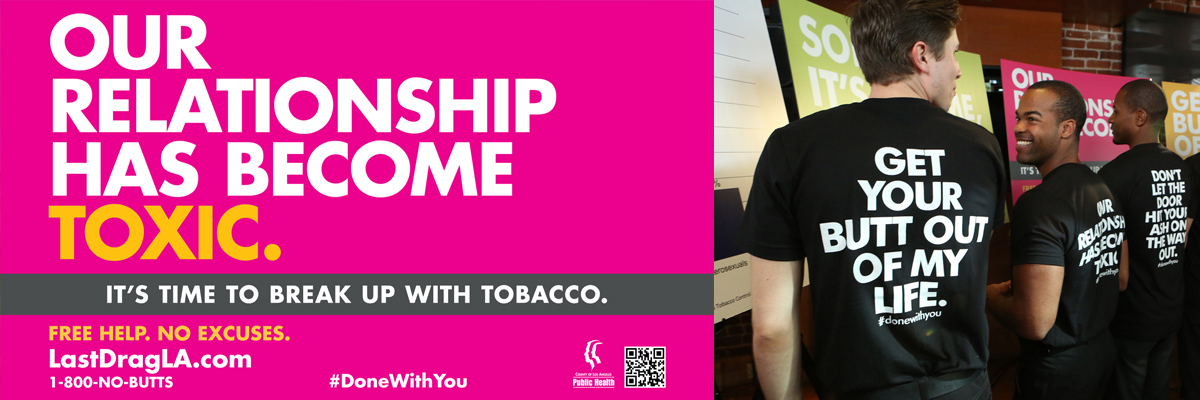
case study
The Break Up Anti-Tobacco Campaign Evaluation
We evaluated of a novel, CDC-funded social marketing campaign to reduce tobacco use among lesbian, gay, and bisexual adults
Client: Los Angeles County Department of Public Health
The Issue
Lesbian, gay, and bisexual (LGB) adults in the U.S. smoke at higher rates than their heterosexual counterparts.
Los Angeles County launched the Break Up, a social marketing campaign to reduce smoking in LGB communities.
The Outcomes
Our evaluation found statistically significant improvements in smoking cessation precursors among those exposed to the campaign.
The study was the first to evaluate an anti-tobacco social marketing campaign in LGB persons.
Publications
The Break Up: Evaluation of an Anti-Smoking Educational Campaign for Lesbians, Gays, and Bisexuals in Los Angeles County
Plant A, Montoya JA, Tyree R, Aragon L, Weber M, Le Veque M, Anderson CM, Soler RE, Kent C. Journal of Health Communication. 2017;22(1):29-36.
“It’s Time to Break Up with Tobacco.”
With funding from the Centers for Disease Control and Prevention (CDC), through a grant to the National Network of Public Health Institutes (NNPHI), the Los Angeles County Department of Public Health launched the Break Up to address tobacco use disparities among LGB persons. This social marketing campaign included a series of colorful, graphic advertisements with bold statements that a smoker might say to a personified cigarette when ending their relationship. Ads were designed to be eye-catching and humorous, to engage LGB adults and to encourage sharing the campaign by word-of-mouth and through social media. Another key campaign element was an outreach team called the Break Up Squad, which went into the community 27 evenings and held 12 events at bars.
This was the first evaluation study of an anti-tobacco social marketing campaign for LGB persons to be published in a peer-reviewed journal.
Social Marketing Campaign Evaluation
Sentient Research collaborated closely with Los Angeles County Department of Public Health and CDC staff during the program planning phase to understand the intended campaign outcomes and to develop an evaluation plan. We designed the survey instrument, which measured demographics, campaign awareness, and various self-reported smoking-related outcomes. We conducted a pre-post, cross-sectional study using street intercept interviews in and around venues frequented by LGB persons in Los Angeles County, including businesses, restaurants, bars, clubs, gyms, and parks. The pre-survey occurred before the campaign began, and included 1,005 participants; the post survey occurred near the end of the campaign and included 510 participants. We analyzed the data to identify whether campaign awareness was associated with smoking-related outcomes. We also measured calls by LGB persons to the California Smokers’ Helpline.
Among those interviewed in the post-survey, 32.7% reported awareness of the Break Up campaign. Campaign awareness was associated with thinking of quitting smoking and taking steps to quit smoking, but not with actual smoking cessation. There was a 0.7% increase in the percentage of weekly calls by LGB persons to the helpline in the year after the campaign. We published the results of the study in The Journal of Health Communications, adding to the limited literature on effective anti-tobacco programs for LGB persons.
